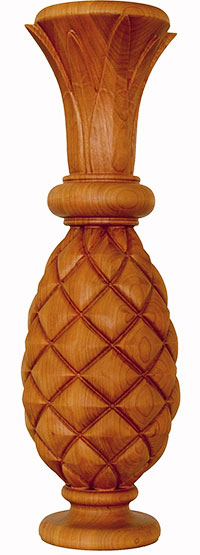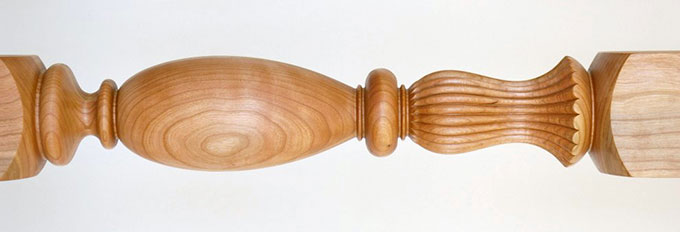For the past 28 years, Stephen Mosher, owner of Cottage Woodworkers in Nova Scotia, Canada, has been knee deep in sawdust: turning pencil sketches and pieces of maple, cherry and walnut wood into dining room tables, wardrobes and beds. Working with a combination of wood grains, he creates unique and affordable high quality furniture.
Stephen's woodworking began with the use of his grandfather's tools at the family's country home in Pictou County, where he crafted small items such as candle sticks and wooden bread bins.

Over time, Stephen received more and more requests for larger pieces such as hutches, beds and mirror frames, which encouraged him to expand and move to the larger premises of the old St. Croix School.
With a larger work space and an increase in demand, Stephen started to invest more in technology. He required a CNC machine that would be capable of anything that he could imagine, but as important, he says, 'software that could do anything too'. With a machine already in mind, he set out looking for a suitable software solution. 'I knew from looking at the 3D carving on the ArtCAM website that this software was what I needed.' he says, 'There is no point in spending tens of thousands of dollars on a machine if you can't have it do what you want.
'Before ArtCAM I used Corel Draw, which is not really meant for CNC work, but it gave me vectors to use for 2D work. Of course the cutter was always on centre line, no "inside" or "outside" of vector cutting. It was a challenge to overcome this.'
From this point onwards, ArtCAM gave him 'great flexibility', he states, 'even for relatively simple things, ArtCAM leaves open different ways of doing the same thing. But where it really makes a difference is in the more complex projects. Many of the pieces I do with ArtCAM just wouldn't be done at all without it.'
Stephen's work now includes a mix of traditional and unique artisan pieces that have been designed to be handed down from generation to generation. He comments, 'when I build pieces for pleasure they get a little more unusual. My inclination these days leans towards more artistic pieces'. Prime examples of this are his recent furniture posts, which were inspired by the shape of plants. He explains, 'The design for the thistle post stemmed from another one of my pieces, the pineapple post; before the leaves were machined on the top, it reminded me of a thistle. The idea for the reeding, however, came from an antique fireplace mantle.'
According to Stephen, it took roughly an hour and a half to model the post as he 'can get very fussy about the shape of things!' He adds, 'The reeding was the tricky part as I couldn't cut the reeds from the top with a shaped cutter, instead I had to cut from the side. To combat this, I used part a of the vector artwork from my ArtCAM model to create the toolpath for machining.'

For more information on Cottage Woodworkers please visit their website - www.cottagewoodworkers.ca
